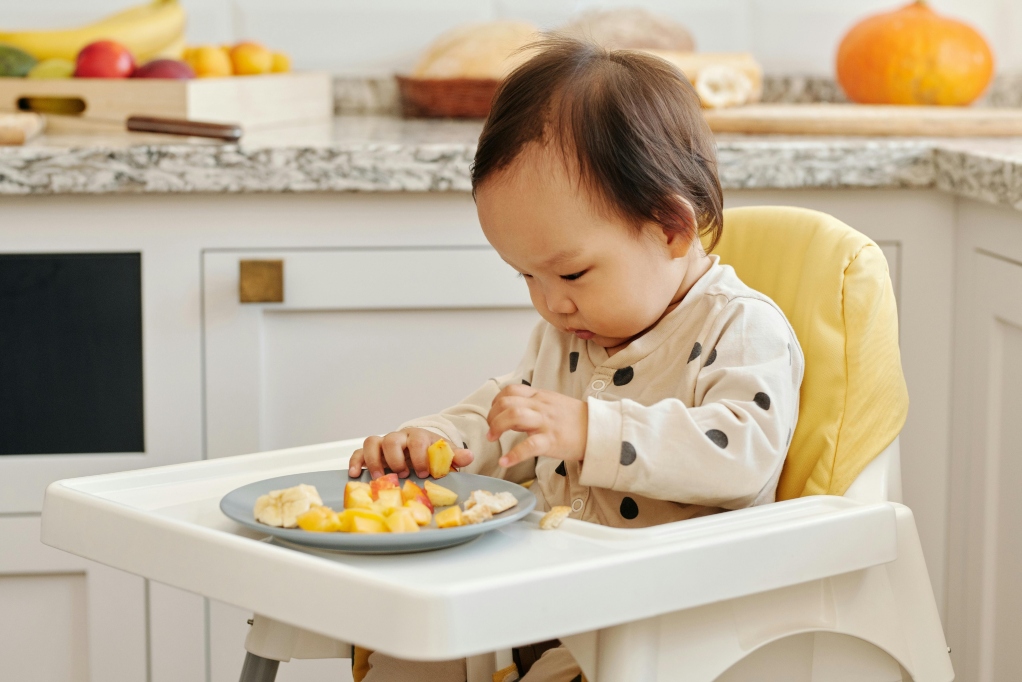
Watching your baby grow and develop is one of life’s greatest joys. As those precious months tick by, the time to introduce solid foods will come before you know it.
In this guide, Dr Ng Ruey Terng, Subang Jaya Medical Centre (SJMC) Consultant Paediatrician and Paediatric Gastroenterologist and Hepatologist, is here to steer you in the right direction, offering practical advice and reassurance.
From choosing the right foods to addressing concerns about allergies, he shares insights into this exciting new chapter of a baby’s life at the recent SJMC Maternity Promotion Grand Draw Prize Presentation, where families who participated the SJMC Maternity Promotion campaign celebrate their new parenthood with the hospital team and learned more about parenting tips from maternity and paediatrics experts.
A Taste of the Big World
“Around the age of 4-6 months, your baby’s nutritional needs begin to exceed the supply offered by breast or formula milk alone. A delay in introducing solids can lead to growth faltering hence to ensure optimal growth, complementary feeding is essential. The transition to solids should be gradual, allowing your baby to wean from breastfeeding and consume a diet similar to the rest of the family,” shares Dr Ng.
Signs that your baby might be ready for solids include being able to hold their head upright while sitting, showing interest in food by watching others eat and opening their mouth when offered food. Also, if your baby seems hungry shortly after breastfeeding or formula feed and is not gaining weight as expected, it might be a good time to introduce complementary feeding.
“It’s common for babies to reject new tastes and textures when they first begin eating solids. Don’t be discouraged if your baby refuses a particular food. Patience and persistence are key. As your baby grows, gradually introduce a wider variety of foods with increasing texture and consistency. The frequency of complementary feedings should also increase over time,” advises Dr Ng.
He adds that child-size portions are key for encouraging food acceptance. Serve smaller amounts than you would for an adult, generally about a quarter or a third of an adult serving. Let your child ask for more if they’re still hungry. Remember, never compare your child’s portion to yours, as adult-sized servings can be overwhelming.
Tips for Child-size Servings
- Never compare a child’s serving portion to an adult.
- Adult-size servings can be overwhelming.
- Child-size serving: 1/4 – 1/3 of an adult.
- Child-size servings encourage food acceptance.
- Serve smaller servings and let the child ask for more.

"The transition to solids should be gradual, allowing your baby to wean from breastfeeding and consume a diet similar to the rest of the family,” shares Dr Ng.
Balancing Diet and Allergies
It’s crucial to offer a diverse range of nutrient-rich foods to ensure your baby receives essential vitamins and minerals for healthy development.
“The Food Pyramid is a versatile dietary guideline for healthy children aged two and above. It categorises foods into five essential groups and provides recommended serving sizes for each to help you create balanced meals. This practical tool promotes a diverse and nourishing diet without being overly restrictive,” shares Dr Ng.
He adds that salt and oil are essential in baby food contrary to advice against it. “I’m not saying to add a layer of oil like our curry laksa. Just a dash of oil provides energy for growing babies and fatty acid for eye and brain development. Any oil will do. You don’t have to splurge of speciality oils. Meanwhile, salt, or sodium chloride, is a source of minerals which help in nerve transmission. Having said that, don’t add sugar to your baby’s food.”
Introducing solids can also raise concerns about potential food allergies. Research shows that early introduction of foods that are more likely to cause allergic reactions, such as eggs, peanuts, dairy and shellfish, reduces the likelihood of the child developing allergic reactions.
“The rule is to introduce new foods one at a time. This way, if your baby has an adverse reaction, it will be easier to identify the specific food responsible and inform your paediatrician,” advises Dr Ng.
Watch signs of an allergic reaction, which may include hives, swelling vomiting, diarrhoea, difficulty breathing, or changes in skin colour. If you notice these symptoms, stop feeding the food immediately and contact your paediatrician.

Child-size portions are key for encouraging food acceptance.
SJMC Unveils New Maternity Promotion
More than 90 parents and children who participated in the SJMC Maternity Promotion Campaign recently joined the Grand Draw Prize Presentation in the excitement of finding out who walks away with the grand prize, the OGAWA VPresto Massage Chair worth RM19,999. They were also entertained by a clown and magician balloonist with a special appearance by SJMC’s mascot, Teddy Paws. Over the 11-month campaign, SJMC celebrated and appreciated parents who chose their hospital to welcome their bundle of joy, offering prizes worth RM130,000.
SJMC is proud to have welcomed multiple generations of families within its hospital walls for nearly 40 years. Many of these families have enjoyed the hospital’s Maternity Promotion, which offers a discount on hospital charges as well as exclusive benefits including complimentary baby essentials, postnatal care guidance and more.
SJMC has also launched a new maternity promotion campaign with an increased discount rate and improved grand draw prizes including a 5g 999.9 Purity Fine Gold Bar. This promotion lasts until 31 December 2025. To expectant mothers and families planning to have a baby, reach out to SJMC to enjoy this special rate and stand a chance to win exciting prizes.
For more information, visit https://subangjayamedicalcentre.com/highlights/maternity-promotion
Source
